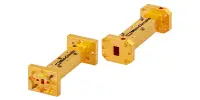A seismometer is a device that detects ground noises and shaking caused by earthquakes, volcanic eruptions, and explosions. It is a scientific tool that detects and records ground motion caused by seismic waves produced by earthquakes, volcanic activity, or other causes of ground shaking. Seismographs are typically made up of a seismograph, a timing device, and a recording device. A seismogram is the output of such a device, which was previously recorded on paper (see image) or film but is now captured and analyzed digitally. Such information is used to locate and characterize earthquakes, as well as to research the internal structure of the Earth.
Basic principles
Seismometers are crucial tools in the study of earthquakes and the Earth’s interior, which is known as seismology. A simple seismometer, sensitive to up-and-down motions of the Earth, is analogous to a weight suspended from a spring, both suspended from a frame that moves with any detected motion. The vertical ground motion is measured by the relative motion of the weight (called the mass) and the frame. A rotating drum is attached to the frame, and a pen is attached to the weight, creating a seismogram of any ground motion.
Any movement from the ground moves the frame. The mass tends not to move because of its inertia, and by measuring the movement between the frame and the mass, the motion of the ground can be determined.
Here’s how a seismometer typically works:
- Sensor: A seismometer’s main component is a sensitive sensor that can detect even minor ground movements. The “pendulum” or “mass-spring” seismometer is the most frequent form of sensor. It is made up of a mass hanging from a spring or pendulum. When the ground shakes, due to inertia, the mass remains relatively steady while the Earth moves beneath it.
- Recording Device: A recording device, either analog or digital, is connected to the sensor. Analog seismometers used a rotating drum coated in paper, and a pen attached to the mass would chart the ground’s motion. Digital recording devices, which may save data digitally for subsequent analysis, are commonly used in modern seismometers.
- Ground Motion Detection: When seismic waves pass through the Earth, they cause the ground to move, and this motion is transmitted to the seismometer’s sensor. The sensor detects this motion and records it as a trace on the recording medium.
- Data Interpretation: Seismologists examine the recorded traces to learn more about seismic events, such as their magnitude, depth, position, and the types of seismic waves produced. They can triangulate the epicenter of an earthquake by analyzing seismic data from many seismometer stations.
Seismometers are available in a variety of sizes and configurations, ranging from small portable devices used for local monitoring to big, sophisticated equipment used in research and observatory settings. They are critical in earthquake monitoring, early warning systems, and scientific research into the Earth’s interior and earthquake dynamics.
















